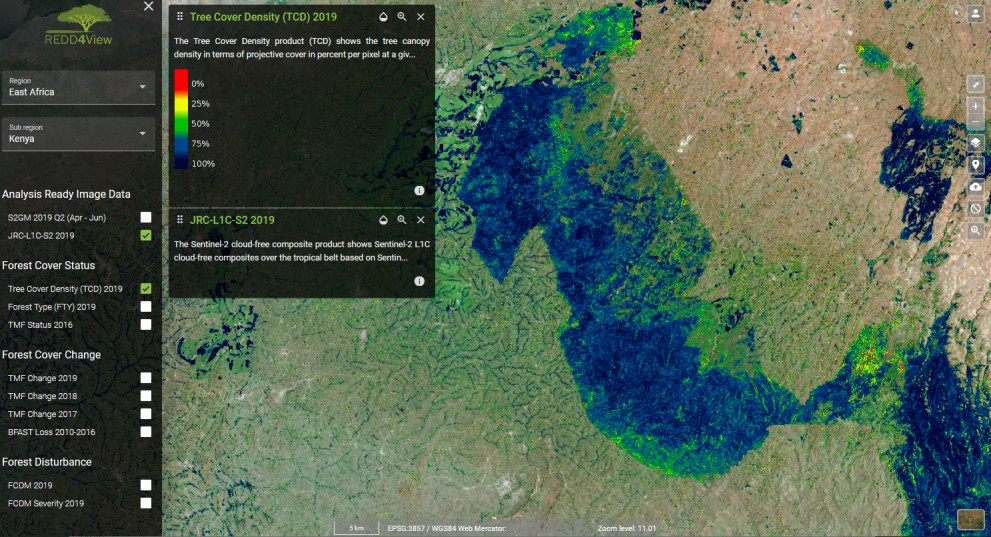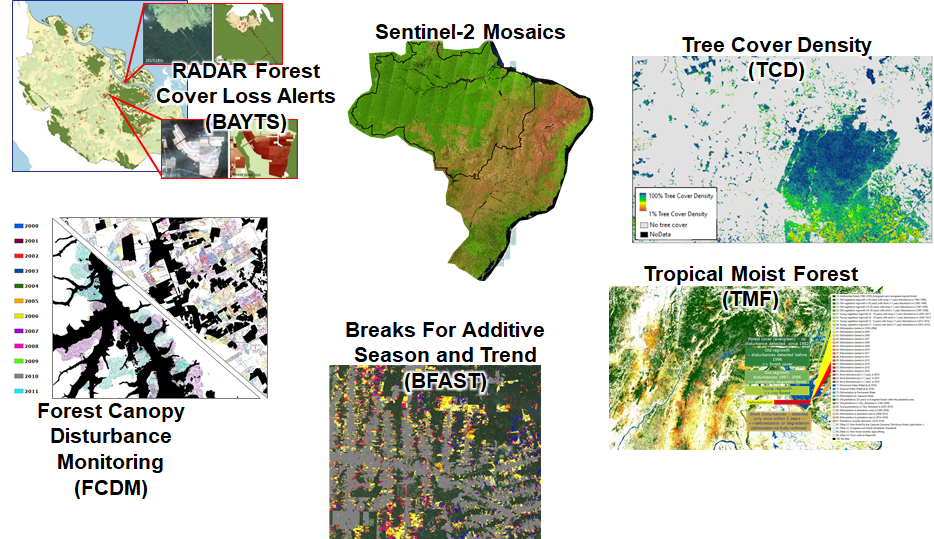
The JRC, with the support of its partners GAF, SIRS and the Wageningen University, organised a series of online workshops with five different tropical regions in September-October 2020 to consolidate the initial design of a potential Copernicus REDD+ Service on Forest Monitoring.
Initially planned as physical meetings, the workshops were successfully held as online webinars with interactive hands-on sessions using dedicated online tools combining geoportal and expert surveys.
Learning Exercises through Interactive Webinars and Geoportal Demonstrations
Five regional workshops were organised including (1) South East Asia region, (2) Eastern Africa region, (3) Congo Basin region, (4) South America region (Brazil) and (5) Southern African Development Community (SADC) region.
The participants included national actors active in forest monitoring and management in these regions (Ministries, National Forest Inventory or Climatic/ Environmental services in charge of REDD+ reporting) and some regional institutions.
The objective was to present, discuss and validate selected prototype products that could help improve forest monitoring and reporting in the context of REDD+, the United Nations’ Reducing Emissions from Deforestation and Forest Degradation (REDD+) programme.
Case studies were presented for test sites through the dedicated REDD4View geoportal in order to assess the relevance of these products for national REDD+ forest monitoring and reporting using an online EU-Survey questionnaire for the Users’ feedback.

Next Step: Consolidation of the Initial Design
An initial design of the main technical and organisational elements of the future Copernicus REDD+ Service Component was prepared. For the technical elements, a benchmarking procedure was applied to a list of potentially suitable concepts already established in the EU Capacities for Earth Observation (EO) Forest Monitoring review. The initial design also provided a first overview and aspects for an institutional, financial and infrastructural framework to be considered for establishing a REDD+ service component.
Thanks to the Users’ feedback collected during these online workshops, the definition of the products and services designed for the Copernicus REDD+ Service will be fine-tuned to best fit the national reporting needs.

REDDCopernicus: Capacity for Copernicus REDD+ and Forest Monitoring Services
The REDDCopernicus project, launched in 2019 in the context of the Horizon 2020 programme, aims to coordinate and consolidate existing EU capacity for EO-based Forest Monitoring.
The project is implemented by a consortium of five organisations (GAF AG - Germany, JRC - Italy, SIRS – France, Wageningen Research University – the Netherlands and VTT – Finland) that are leaders in the EO domain and are well experienced in addressing technical and methodological challenges related to EO Forest Monitoring, both in the tropics and Europe.
A key expected outcome of the project is a proposal for a framework of a Copernicus REDD+ Service, which can make use of the existing Copernicus Data and Information Access Services Platform (DIAS) that will provide improved EO data and product functionality for both tropical and European users.
It is planned that this REDD+ component will deliver data from the tropical belt, which would be included in the EU Forest Observatory that is planned under the Communication to step up EU action to protect and restore the World’s forests (COM(2019) 352).
The Communication prioritises research and innovation to produce accessible high-quality information on forests and commodity supply chains.
The monitoring of tropical forest areas with the EU Forest Observatory is expected to become operational through the Copernicus programme.
Further information
- REDDCopernicus
- Access to REDDCopernicus documents (including Workshops Information, Initial Design Report)
- Communication (2019) on stepping up EU action to protect and restore the world’s forests (COM(2019) 352)
- Forest Resources and Carbon Emissions (IFORCE)
Related Content
Access to REDDCopernicus documents (including Workshops Information, Initial Design Report)
Details
- Publication date
- 20 October 2020
